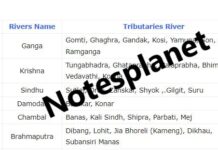Mauryan Empire
After invasion by Alexander, the North western region in India faced various foreign attacks that caused unrest in these Indian States. The Nandas who had been ruling at that time were not popular due their acute taxation regimes levied on agricultural by Dhanananda. The conditions like these gave opportunities to other authorities to take over the principle.
It had been among the greatest empires listed in India history. The principle of Mauryas lasted from 322 — 185 B.C. where bulk of India was united as a single nation by the great founder emperor Chandragupta Maurya.With the support of Kautilya or Chanakya, Chandragupta Maurya laid the foundation of this huge empire.
Following Chandragupta, his son Bindusara additional extended the kingdom over whole sub-continent almost. It must be said that the Mauryan Empire had the most effective military in early India. . Following the Kalinga war, Ashoka became a follower of Buddhism and caused its spread across the Indian sub-continent by sending missionaries.
We will clarify the details of rulers of the Mauryan Dynasty in a different article, first let us look into another important topic about the Maurya Empire, their management.
Mauryan management
Questions regarding the government regime followed in the Mauryan empire, are asked in various comprehensive examinations like IAS mains exam, State PSC exams, etc.. The facts about the government under Mauryas have been expected to answer the MCQ kind question about background. Let us look to the details today:
Chanakya or Kautilyas Arthashastra clarifies the type the of administration system followed at the Maurya Empire. The book has 15 sub-parts which include 180 chapters. This book provides the most important literary resource for study of the Mauryan administration.
The Central Government at Mauryan Empire
The King was supreme source of power and governments with administrative and judicial powers.
Mauryan Administration was a very centralized system.
The King needed a Council of Ministers to help him. These ministers were called’Mantri’, along with the council of Ministers was called’Mantriparishad’. There was a’mantriparishad-adhyakshya’ to go the Council, this is similar to our current Prime-Minister.
Intellect
The espionage system in the Mauryan government was designed and well-spread.
According to this Arthashastra, there are two kinds of spies, specifically,’Sansthana’ (the stationary) and’Sanchari’ (the drifting one).
All these spies acted as eyes and ears to the King, these kept the king well-informed regarding the whereabouts of the bureaucracy of the nation.
The detectives in Mauryan administration were called’Gudhapurusha’.
These representatives included individuals from various segments of society, like, householders, retailers, ascetics, disciples, etc..
There were particular agents that acted as Poisonous girls called as’Vishkanyas’.
Shipping
Transport was managed by a separate Department of Road.
The section determined the width of cattle monitors, chariots, and pedestrians, were prescribed otherwise.
Facilities for travelers were created along the roads, trees on both sides of the road have been planted, Inns or restrooms for the travelling people were constructed near the streets, care was taken to give drinking water to travelers by means of wells and canals.
Agriculture
The main of Agriculture division was called’Sitadhyaksha’.
Subsequently there was different irrigation department as well which seemed after a network of canals. These canals provided water for irrigation according to property requirements.
Revenue Department:
The main of Revenue Department was known as’Samharta’, he was in-charge all earnings collection.
The earnings was collected from land, irrigation, habits, store taxation, ferry tax, woods, mines and pastures,
license fee from craftsmen, and penalties collected in law courts.
The value of land earnings demanded fixed at’one-sixth’ of the produce.
Majority of this revenue went to expenditure about the household of the king, military, the government servants, poor relief, public works, etc..










